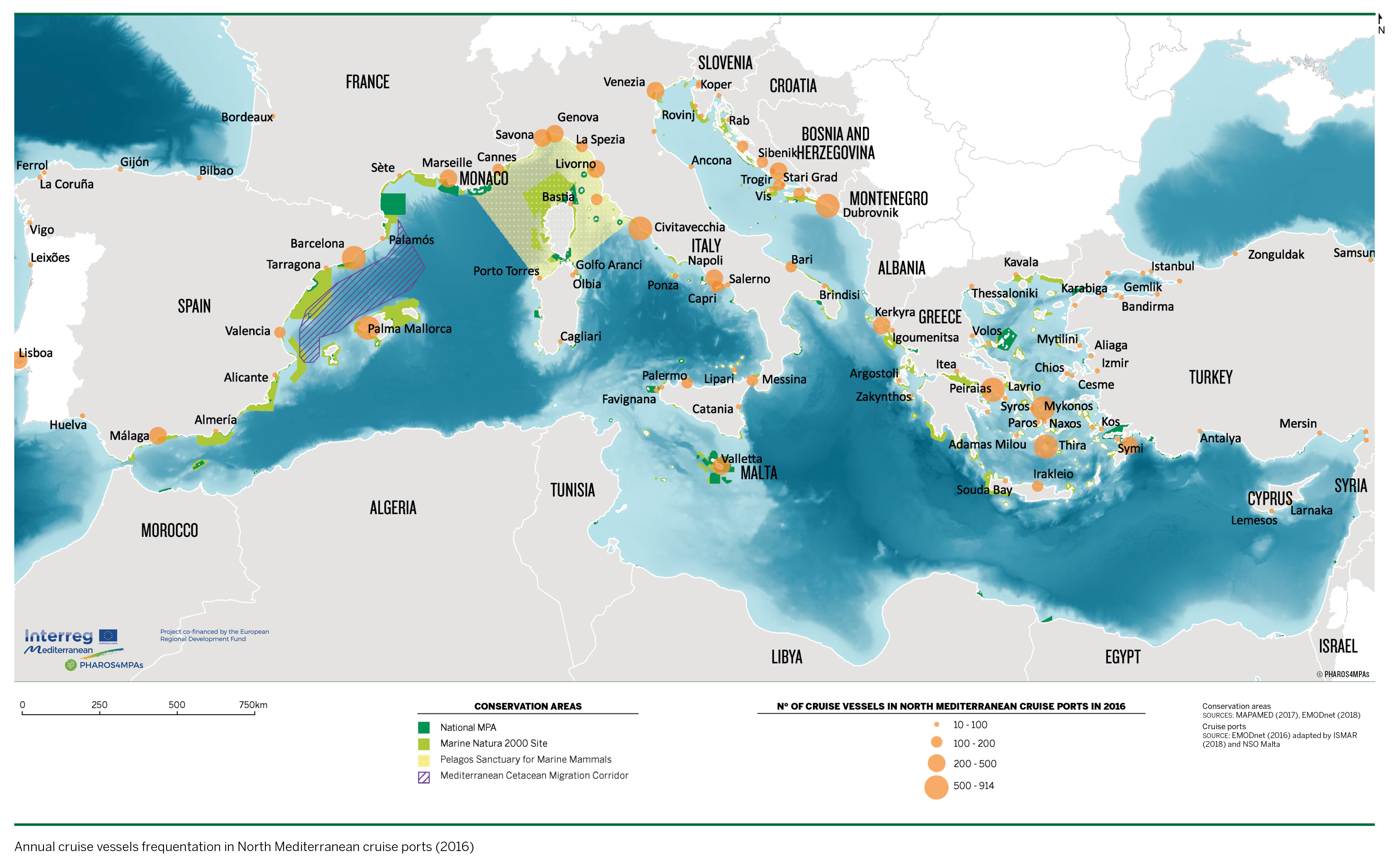The WWF is run at a local level by the following offices...
- WWF Global
- Adria
- Argentina
- Armenia
- AsiaPacific
- Australia
- Austria
- Azerbaijan
- Belgium
- Bhutan
- Bolivia
- Borneo
- Brazil
- Bulgaria
- Cambodia
- Cameroon
- Canada
- Caucasus
- Central African Republic
- Central America
- Chile
- China
- Colombia
- Croatia
- Democratic Republic of the Congo
- Denmark
- Ecuador
- European Policy Office
- Finland
© Shutterstock
Cruise
Cruise passenger numbers in the Mediterranean have rocketed from 8.7 million to 30 million in a decade.
The Mediterranean is the world’s leading destination for coastal and maritime tourism, attracting about one third of all global visitors: in terms of gross added value and employment it’s the biggest sector in the tourism industry.
Cruise tourism is rapidly changing as ships have evolved from carrying fewer than a thousand people in the 20th century to today’s mega-cruisers that can hold more than 6,000 guests and 2,000 crew. These "floating cities" can carry some 8,000 people at a time.
Cruising’s environmental cost – air, noise and marine pollution –is serious and it’s going to get worse as the industry keeps growing. One of the sector’s main impacts is from the discharge of wastewater, which occurs mainly, and most intensely, on the open sea: this has broad implications for the environment as a whole, and regions with low water exchange in particular.
Managing this growth in a coordinated way across the region is essential so the sector doesn’t destroy the very resources which attract people to the Mediterranean in the first place. Clearly, efforts must be made to limit the environmental impacts of cruising as far as possible, particularly in ecologically vulnerable areas. The map shows the annual cruise frequentations in Northern Mediterranean cruise ports vs. Mediterranean main conservation areas
The map shows the annual cruise frequentations in Northern Mediterranean cruise ports vs. Mediterranean main conservation areas
Managing this growth in a coordinated way across the region is essential so the sector doesn’t destroy the very resources which attract people to the Mediterranean in the first place. Clearly, efforts must be made to limit the environmental impacts of cruising as far as possible, particularly in ecologically vulnerable areas.
 The map shows the annual cruise frequentations in Northern Mediterranean cruise ports vs. Mediterranean main conservation areas
The map shows the annual cruise frequentations in Northern Mediterranean cruise ports vs. Mediterranean main conservation areasCruise
Traffic should be carefully managed, and large ships should be kept out of ecologically vulnerable areas.